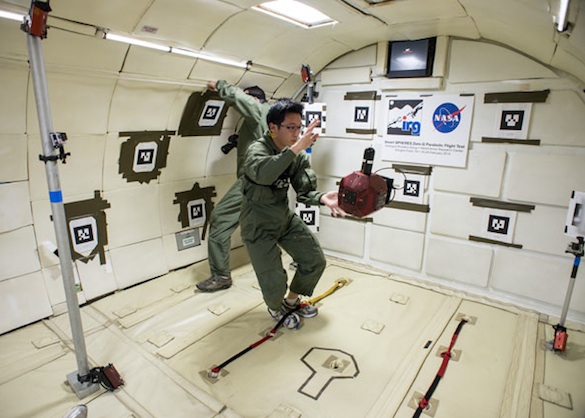Human Exploration Telerobotics (HET) Smartphone
PI: Terry Fong, NASA/Ames Research Center
PI: Terry Fong, NASA/Ames Research Center

- TA05 Communication and Navigation
No information available.
This flight campaign tested three different configurations of the HET Smartphone (a modified Google Project Tango). The first configuration used the smartphone only to conduct 3-D mapping of the test environment. This was performed in both 0g and 1g for comparison. The 0g measurements were collected over six parabolas. Each parabola was used to collect one plane of the operating environment; ceiling, deck, forward, aft, starboard and port. The next two configurations both used the Smartphone connected to the Synchronized Position Hold Engage Reorient Experimental Satellite (SPHERES) free flyer. Free flyer flight was measured with the Smartphone sensors, but the motion was also recorded using the SPHERES positioning beacons for comparison. The second configuration used the Smartphone sensors to characterize thruster performance. The various SPHERES thrusters were fired while the Smartphone measured movement of the free flyer. For each parabola, the SPHERES would only fire thrusters along one axis, and each axis was measured over several parabolas. This was repeated for +/- x, y and z axis. The third configuration used the Smartphone to command movement of the SPHERES, then the Smartphone would measure and monitor SPHERES movement. Plans (which script translation paths between waypoints) were selected and run from the Smartphone interface. Each plan was designed to complete within one parabola, and each plan was run multiple times.
Technology Details
-
Selection DateNASA Directed
-
Program StatusCompleted
- 1 Parabolic
Development Team
-
PITerry Fong
-
Organization
-
SponsorNASA Game Changing Development Program
-
More Information

